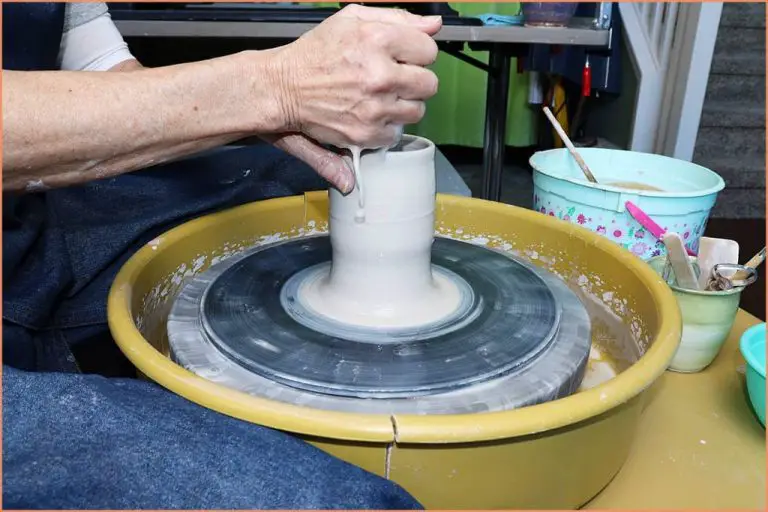How Do You Make A Realistic Tiger Out Of Clay?
Gather Materials
The first step in sculpting a realistic tiger from clay is to gather the necessary materials. The main supply you will need is air dry clay or polymer clay. Air dry clay is an inexpensive option made from natural clay that hardens as it dries without needing to bake it. Polymer clay is more durable and requires baking to harden, but provides more detailed sculpting ability. In addition to the clay, you will need an assortment of clay sculpting tools like loop tools, alphabetical clay shapers, a rolling pin, an armature if using an air dry clay, and sculpting blades.
You will also need acrylic or tempera paints in appropriate tiger colors like orange, black, white, and brown. Paintbrushes in a variety of sizes with soft bristles will be ideal for adding stripes and details. Having all of these materials ready before starting the sculpting process will make the project go smoothly.
Make the Base
Before sculpting any details, you’ll need to create the basic body shape for your tiger out of clay. This will form the foundation that you’ll add more realistic details onto later. Start by rolling clay into elongated oval shapes for the body and head. Use your fingers to gently blend the head to the body. For the legs, roll four cylinders for the upper legs and four tapered cylinders for the lower legs. Attach these to the body using slip, which is a mixture of water and clay that acts as glue. Do the same for the paws. For the tail, roll a cylinder shape and bend it into an S-curve, attaching it to the end of the tiger’s body. At this stage, it will look very basic, but as you add sculpting details it will start to look more realistic.
Sculpt the Head
Once you have the basic head shape formed, it’s time to add the detailed features that will bring your tiger to life. Start by carefully forming the snout and jaws using your clay sculpting tools. The snout should protrude outwards and have a rounded triangle shape when viewed from above. Sculpt the upper and lower jaws, making sure to define the mouth area.
Next, use a small sharp tool to indent the eyes. Make sure they are properly spaced and shaped like almonds, keeping in line with the angle of the snout. For the ears, form triangular shapes and add lines inside them to define the inner ear details. Make small oval indentations on the muzzle for the nostrils.
Work slowly and carefully as you sculpt each facial feature. Observe reference photos of tigers to capture the proper proportions and angles of the eyes, ears, nostrils and mouth. Pay close attention to the perspective from different views as you work. With some patience, you’ll start to bring your tiger’s head to life.
Sculpt the Tiger’s Body
After the head is formed, shift focus to sculpting the body. First, build up the torso, defining the chest and stomach areas. Use your fingers, sculpting tools, or a rounded item to indent and shape the stomach, creating a curved underside.
Next, carefully sculpt each leg, creating muscular thighs, knees, calves and paws. Use references of tiger anatomy to realistically shape the leg muscles and joints. Add definition to the shoulders and hips to give strength to the body.
To create fur texture, use a clay sculpting tool to make small, close-set indentations all over the body, legs and tail. Make curved strokes to give direction to the fur. Add stripes and marking patterns with angled tools. Focus the striping on the legs, tail, face, and other key areas.
Work slowly and methodically to sculpt a realistic, muscular tiger body with clear fur texture and stripes. Check proportions as you work and make adjustments to capture the tiger’s powerful form.
Add Surface Details
Now that the basic shape and form of the tiger is sculpted, it’s time to add all the realistic surface details that will bring it to life. This stage is crucial for making your tiger sculpture look authentic. Use various clay sculpting tools to etch in fur textures all over the body. Look at reference photos of tigers to see how the fur falls in different directions along the legs, chest, head, etc. Use a knife tool to cut in lines that mimic striped fur then go back over with a clay shaper for added texture.
For the head, really bring out the facial features by using a small loop tool to indent the eyes, nose and mouth. Refine the ears, jowls and whisker areas to add form. To make the whiskers, roll out tiny sausage shapes of clay and carefully attach them one by one where a tiger’s whiskers would be. Bend and shape the whiskers to look natural. Add some clay claws at the end of each toe for added realism. Sculpt small cracks and imperfections into the paw pads. Finally, use a toothbrush or stiff brush to stipple the fur all over for a textured finish.
Let Clay Dry
Once you have finished sculpting and detailing your tiger, it’s important to allow adequate drying time before painting. Clay shrinks and cracks as it dries, so letting it dry fully helps prevent defects from forming on the surface.
Air drying clay sculptures thoroughly can take days or even weeks. To speed up drying, consider placing the unfinished sculpture in a specialized drying box. Drying boxes circulate warm air around the sculpture to gently extract moisture from the clay.
Test the clay with your fingers before painting. If it still feels cool and damp, give it more time to dry. Rushing into painting before the clay is fully cured risks having the paint crack or peel. Patience ensures your paint job will turn out smoothly.
Prepare for Painting
Once the clay has completely dried, which may take several days to over a week depending on the thickness, you will need to prepare it for painting. Take a sheet of fine grit sandpaper and gently sand any rough areas or uneven textures. Be very careful not to sand away any important sculpted details. Blow away any dust. If using acrylic paints, it’s best to apply a primer so the paint adheres to the clay properly. Spray paint primer works well for covering all the clay. Apply 2-3 thin coats allowing drying time between each coat. Now the tiger sculpture is ready for painting.
Paint the Tiger
When painting a clay tiger sculpture, it is important to first apply a base coat of orange paint to represent the tiger’s fur. Use an acrylic paint in a bright orange hue and apply it evenly across the entire sculpted body. Ensure you get into all the crevices and details of the fur.
Next, paint on the signature black tiger stripes. Look at photo references of real tigers and replicate the stripe pattern on your sculpture. The stripes should vary in thickness and opacity, with some blending into the orange base color. Use a small brush to paint on the stripes in long strokes.
Paint the chest, stomach, inner legs and chin a creamy white color to represent the tiger’s belly and body contours. Blend the white into the orange around the edges so it looks natural.
Finally, use darker shades of orange and black to add details like fur tufts, textures, and facial features. Paint the eyes, nose, mouth and inner ears black. Add dots and stripes on the head to mimic real fur patterns. Make the color palette dynamic but ensure the main orange and black shades dominate.
Add Finishing Details
Once the tiger has been painted and allowed to fully dry, a few final touches will really help bring your clay sculpture to life. Focus on accenting shadows and textures to make your tiger more realistic. Use darker paint or a wash to add shadows in the folds, crevices, and recessed areas of the sculpture. This will add depth and dimension. You can even use a dry brush technique, gently brushing a small amount of darker paint over raised areas to highlight the texture.
Consider adding some finishing details like whiskers made from thin pieces of clay or wire, claws made from toothpicks, or glass eyes to make your tiger sculpt really pop. Get creative with adding any other details that will enhance the realism.
Finally, once you are fully satisfied with the look of your clay tiger, apply a sealant spray or brush-on finish. This will protect the paint and sculpture from damage. Allow the sealant to fully cure before displaying your incredible, one-of-a-kind tiger sculpture!
Display the Finished Sculpture
After all the hard work sculpting and painting your realistic tiger, you’ll want to proudly display your masterpiece. Choose an appropriate stand or mount to give your sculpture stability and support. Avoid flimsy materials that could allow your tiger to tip over and break. Select a sturdy acrylic or wooden stand specifically designed for displaying sculptures.
Find a prominent, well-lit area in your home to showcase your artwork. Natural lighting from a window is ideal for illuminating the details and colors of your tiger sculpture. Place it on a table, bookshelf, mantle, or countertop where it will truly stand out. Turn the sculpture to catch the light from different angles, highlighting the textures and paint colors. Your realistic tiger will be a breathtaking focal point of any room.




